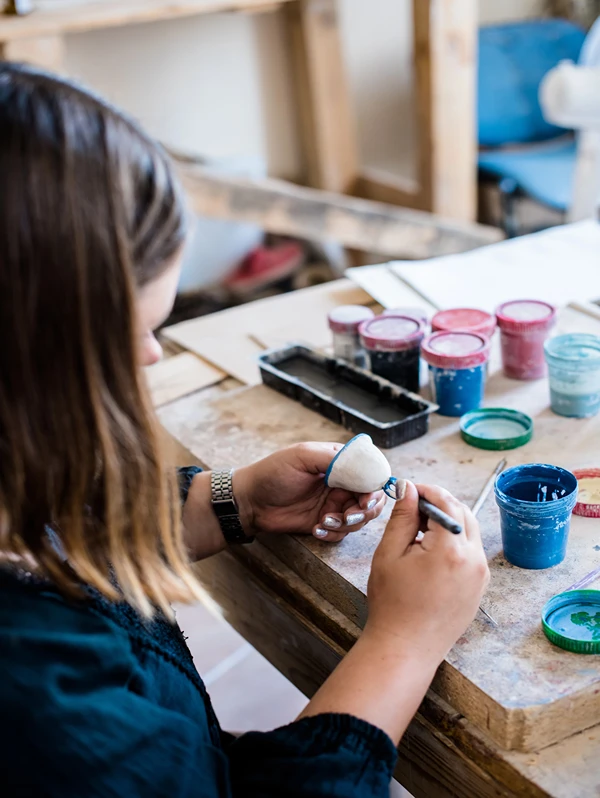How to Foster Your Child’s Interest in STEAM
Encouraging your child’s curiosity in science, technology, engineering, arts and math — referred to commonly as STEAM — nurtures curiosity, creative thinking and essential skills. These subjects lead children to pursue a higher education and a career they love, as well as challenging and fun extracurriculars.
Here are some ways you can foster a love of STEAM with your child.
1. Model Positive Attitudes Toward STEAM Subjects
Express genuine enthusiasm for math, science and design in your own life. Children naturally adopt attitudes they observe in their parents and caregivers, especially young ones, as they are highly impressionable and have innate curiosity.
Watch your language carefully — avoid phrases like “I was never good at math” or “Science wasn’t my thing.” These seemingly innocent comments influence your child’s beliefs about their abilities.
You can also point out and discuss STEAM concepts in everyday life, like the engineering behind bridges you cross, the chemistry and art in baking or the mathematics in music.
2. Integrate STEAM Into Daily Activities
Bring attention to the fact that STEAM impacts your child’s everyday life. Here are some activities that help bring the concept home:
- Cook together using precise measurements to demonstrate fractions and chemical reactions.
- Plant a garden and document growth patterns, weather effects and the science of plant development.
- During building projects, discuss concepts like balance, symmetry and structural integrity.
- When shopping, calculate discounts, compare unit prices or estimate the total cost before checkout.
- Look for patterns in nature during walks, such as the symmetry in leaves, geometric shapes in crystals or the mathematics behind animal markings.
3. Explore Through Interactive Experiences
Take advantage of community resources like museums, science centers and planetariums that make learning tangible and exciting. You may find family-friendly STEAM events offered by local schools, libraries and community centers.
Attend maker fairs, robotics competitions or science festivals together to witness STEAM in action and connect with the broader community.
Also, consider interactive learning adventures that blend education with exploration. Check out a local science museum or interactive experience, such as the following:
- Smithsonian National Museum of Natural History: This museum in D.C. is home to the largest natural history collection in the world.
- Whitaker Center for Science and the Arts: Located in Pennsylvania’s capital, the Whitaker Center demonstrates how science and art go hand in hand through educational documentaries and interactive science exhibits for kids.
- California Science Center: Exhibits range from ecosystems to air and space and more, so your kids can explore different interests.
Look for local family-centric programs that offer impactful educational events like scavenger hunts that combine puzzle solving, adventure challenges and informative self-guided tours to introduce STEAM concepts through hands-on discovery.
4. Encourage Hands-On Experimentation
Create a designated space with simple materials, like baking soda and vinegar, magnets, building blocks, art supplies and recycled materials, to encourage mess-friendly STEAM experimentation. Provide open-ended toys and kits that encourage building, designing and problem-solving without prescribed outcomes.
Allow time for unstructured tinkering. Consider taking apart old electronics, building contraptions from recycled items around the home and neighborhood, or designing solutions to household problems.
You can also support participation in coding clubs, science competitions or engineering challenges that extend learning beyond school hours.
5. Foster Critical Thinking and Problem-Solving
During whatever activity your child is engaged in, ask open-ended questions that prompt deeper thinking. Use design thinking exercises to encourage critical thought. This includes identifying needs around your home, brainstorming solutions, coming up with simple prototype ideas and testing them.
Play strategy games and puzzles that develop logical reasoning, spatial awareness and pattern recognition. Even very young children can begin developing STEAM mindsets through play that involves sorting objects by color or shape, building with blocks or exploring cause and effect through simple experiments with water or sand.
Be sure to discuss real-world problems at an age-appropriate level and explore how STEAM innovations might address them. Encourage your child to question assumptions and seek evidence before drawing conclusions — key habits in scientific thinking.
Most importantly, resist the urge to intervene immediately every time your child faces difficulties. Allowing them to work through challenges helps them get better at problem-solving, which helps them grow their knowledge base, develop confidence, a sense of accomplishment and resilience.
6. Celebrate Effort and Growth
One of the best ways to promote STEAM is to encourage and celebrate your child’s efforts, even if they make mistakes along the way. This leads to skill development and an appreciation of their abilities.
- Praise specific efforts rather than innate ability. Say, “You worked so hard to figure out that math problem!” instead of “You’re so smart!”
- Create a family culture that values persistence through challenges rather than immediate success.
- Proudly display STEAM projects and accomplishments in your home, regardless of their perfection. Yes, even the losses.
- Share stories of famous innovators who faced multiple failures before achieving breakthroughs.
- Document your child’s growth over time in STEAM areas, helping them see their own progress and development.
- In the same regard, also celebrate mistakes as learning opportunities rather than failures. This demonstrates that struggle is a normal part of the learning process in STEAM fields. Kids with growth mindsets perform better than rigid-minded
Early STEAM Exposure Matters
Early experiences with STEAM concepts build confidence and capability that extend throughout education. More importantly, these activities develop transferable skills like creative problem-solving, analytical thinking and collaboration that will serve them throughout life, regardless of their eventual career paths. Your enthusiasm and support create the foundation upon which your child’s interest in STEAM flourishes.
 Author bio: Cora Gold is the Editor-in-Chief of women’s lifestyle magazine, Revivalist. She strives to live a happy and healthy life with her family by her side.
Author bio: Cora Gold is the Editor-in-Chief of women’s lifestyle magazine, Revivalist. She strives to live a happy and healthy life with her family by her side.
Follow Cora on Facebook and LinkedIn.






